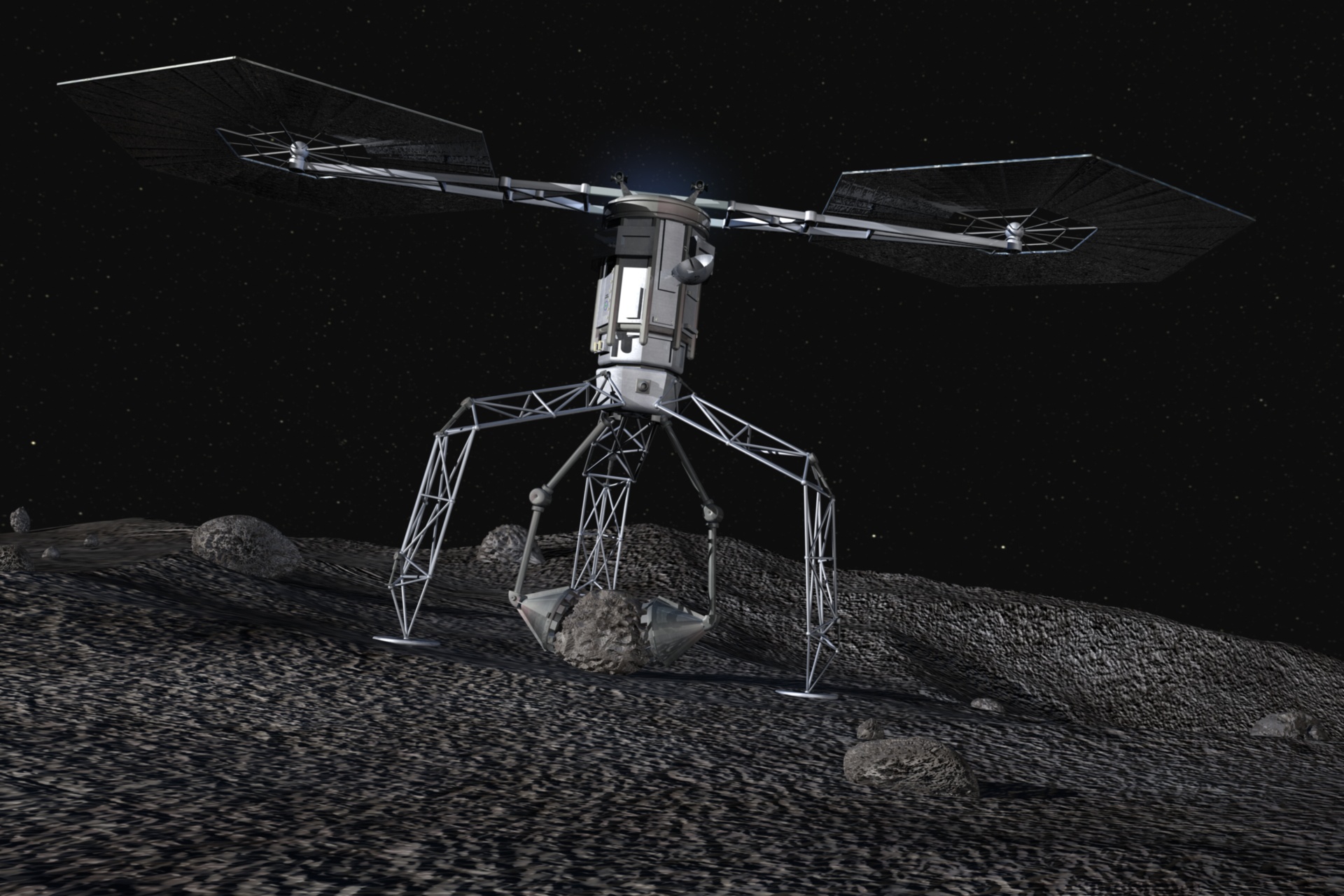The legal aspects of the ownership and use of lunar and other extraterrestrial resource, such as asteroids, and their implications for endeavours of this sort are important in considering how space development may proceed. The law will have an influence on such efforts, particularly if they are private and commercial, as the nature of ownership will directly influence how they can be used and sold.
 The dawning of the Space Age in 1957 with the flight of Sputnik 1 and the International Geophysical Year of 1957/58 focussed thoughts on the need for a legal regime to manage and regulate space activities. The United Nations was quickly recognised as the most appropriate forum for drawing up the principles involved. An important influence on this developing body of legal principles was the Antarctic Treaty System, which viewed Antarctica as a pristine wilderness that needed to be preserved. Outer space was seen in a similar way.
The dawning of the Space Age in 1957 with the flight of Sputnik 1 and the International Geophysical Year of 1957/58 focussed thoughts on the need for a legal regime to manage and regulate space activities. The United Nations was quickly recognised as the most appropriate forum for drawing up the principles involved. An important influence on this developing body of legal principles was the Antarctic Treaty System, which viewed Antarctica as a pristine wilderness that needed to be preserved. Outer space was seen in a similar way.
After a series of UN resolutions setting out initial principles in the early sixties, the Outer Space Treaty (1) was enacted in 1967 and is the most important legislation in this area. Article 1 refers to outer space as the “common province” of all mankind. This concept is continued in Article 2, which states that outer space, including the Moon and all other celestial bodies (apart from the Earth of course!) cannot be owned or appropriated by any nation state. The prohibition set out in Article 2 includes ownership by way of occupation; for example simply occupying a site on the Moon, as in a base or station, does not of itself confer rights of ownership.
 The Treaty envisages bases being built on the Moon or Mars, for instance, but says that other nations will have the right, subject to reasonable notice, to inspect them. So, if a company builds a mine on the Moon with some secret commercial processes, it has to allow other people in to inspect. These obligations apply to companies or individuals of state parties to the Treaty, as the Treaty makes nation states responsible for the actions of their citizens and legal persons (such as companies) while they are in space.
The Treaty envisages bases being built on the Moon or Mars, for instance, but says that other nations will have the right, subject to reasonable notice, to inspect them. So, if a company builds a mine on the Moon with some secret commercial processes, it has to allow other people in to inspect. These obligations apply to companies or individuals of state parties to the Treaty, as the Treaty makes nation states responsible for the actions of their citizens and legal persons (such as companies) while they are in space.
The Outer Space Treaty was ratified by a large number of countries and is considered an important source of legal principles that apply to space, principles that are likely to be long lasting and very influential.
To some countries, the Outer Space Treaty did not go far enough. The developing nations were concerned that if the space faring nations (which were of course powerful, developed nations) utilised the resources to be found in space, they would be left even further behind. After much negotiation, in 1979 a further UN treaty known as the Moon Agreement (2) was enacted that sought to advance these issues.
As well as repeating the prohibition on ownership of territory in outer space, the Moon Agreement goes further by prohibiting the ownership of any of the substance of a celestial body, such as the Moon’s regolith or the minerals to be found in asteroids. Instead, it proposes an international regime that would administer and regulate the exploitation of the resources of outer space. These resources are, according to the Moon Agreement, the “common heritage of mankind”, a concept that requires the exploitation of outer space resources to be for the benefit of all humanity and in particular developing countries which are not in a position at present to directly explore the Moon or other parts of space.
Other Articles in the Moon Agreement require that those exploring space must take measures to avoid the disruption of the “existing balance” of the environment of the Moon, or other parts of outer space.
 This is a profoundly different approach than the simply exploitative and as a result the Moon Agreement was not ratified by any of the space faring nations. The USA felt that it was too “socialist” and the Soviet Union disliked the concept of the common heritage, fearing it too similar to a concept of “inheritance” and the wealth this implied. As a result, the international regime it sought to instigate was never taken any further. This unfinished legal regime complicates the position for companies interested in the exploration and even exploitation of space, as they have no clearly enforceable rights of ownership to whatever they find or use.
This is a profoundly different approach than the simply exploitative and as a result the Moon Agreement was not ratified by any of the space faring nations. The USA felt that it was too “socialist” and the Soviet Union disliked the concept of the common heritage, fearing it too similar to a concept of “inheritance” and the wealth this implied. As a result, the international regime it sought to instigate was never taken any further. This unfinished legal regime complicates the position for companies interested in the exploration and even exploitation of space, as they have no clearly enforceable rights of ownership to whatever they find or use.
These Treaties were drawn up in a time when access to space was the preserve of nation states. Now private enterprise seeks to push back the final frontier. In the USA, this has prompted fresh legislation, including the SPACE Act (3). Headlines have been written suggesting the SPACE Act entitles individuals and companies to claim territorial rights to asteroids or parts of the Moon. This is misleading. The Act supports, within the context of the USA’s domestic law, claims by US citizens and companies to rights to extraterrestrial resources, but makes it clear that this is subject to the USA’s international obligations, for example under the Outer Space Treaty.
Earth bound precedents can help us consider how Space Law might move forward. The Antarctic Treaty System, a forerunner for Space Law in this area, has been successful in halting commercial development in its jurisdiction. Yet do these same concerns of preservation apply quite so clearly on the Moon or to asteroids? A closer analogy is the law of the deep seabed, where the common heritage of mankind principle is relevant as well. The deep seabed could be a source of mineral resources, in a way that is reminiscent of hopes for minerals from asteroids or the Moon. The International Seabed Authority administers this legal regime and its history could provide insights into how Space Law in this area might develop.
If either countries or companies are seeking to use and exploit the resources of space, these legal issues will have to be looked at again to ensure they have the rights to do so and indeed recently the American government has shown an interest in doing so. Unless we are content to see a tragedy of the commons (4) in space or a lawless free for all, the rule of law is going to be important in ensuring the enormous investment required is safeguarded.
-
The full name for the Outer Space Treaty is the Treaty on Principles Governing the Activities of States in the Exploration and Use of Outer Space, Including the Moon and Other Celestial Bodies. See http://www.unoosa.org/oosa/en/ourwork/spacelaw/treaties/introouterspacetreaty.html
-
The full name for the Moon Agreement is the Agreement Governing the Activities of States on the Moon and Other Celestial Bodies. See http://www.unoosa.org/oosa/en/ourwork/spacelaw/treaties/intromoon-agreement.html
-
The full name for the SPACE Act is the Spurring Private Aerospace Competitiveness and Entrepreneurship (SPACE) Act of 2015. See https://www.gpo.gov/fdsys/pkg/BILLS-114hr2262enr/html/BILLS-114hr2262enr.htm
-
“The tragedy of the commons” is a scenario referred to by economists. An illustration of this, considered in the nineteenth century, involves an area of common land on which cattle may graze. Each herder, acting rationally, would be inclined to add additional cattle to his herd to gain more from grazing on the land. If all the herders do this, in time the land involved would be overexploited, to the detriment of all. The point is of general application in a wide range of contexts, including the oceans, the atmosphere, the seabed, and so forth.

I’m surprised there is no mention of the existing legal structures regarding usage of locations in space used for placement of satellites. This is a functioning system, and deals with desirable property (e.g., geosynchronous orbit).
The laws governing satellites are far more relevant both in terms of addressing use of space itself and in terms of the likelihood of being extended to other uses of space than UN treaties that don’t have a great history of being effectively enforced when contrary to the desires of nations with permanent security council membership – and certainly a treaty ratified by no relevant nation.